
Table des matières
In the realm of electrical installations, gang boxes emerge as crucial components that epitomize organization, safety, and efficiency in wiring systems. Defined as specialized enclosures designed to accommodate multiple electrical devices within a unified structure, gang boxes play an indispensable role in the seamless integration of various components within electrical networks.
Definition and Purpose of Gang Boxes
Gang boxes, often referred to as conduit boxes or electrical boxes, are purpose-built enclosures that serve as centralized hubs for housing and organizing multiple electrical devices, such as switches, outlets, or receptacles, within a single unit. These boxes are meticulously crafted to provide a secure and structured environment for the installation and connection of diverse electrical components, facilitating a streamlined and cohesive wiring setup.
The primary purpose of gang boxes is to consolidate and protect multiple electrical devices within a compact and organized enclosure. By offering a centralized location for the installation of various components, gang boxes not only enhance the functionality and aesthetics of wiring systems but also contribute to the safety and efficiency of electrical installations.
Why are Gang Boxes Important?
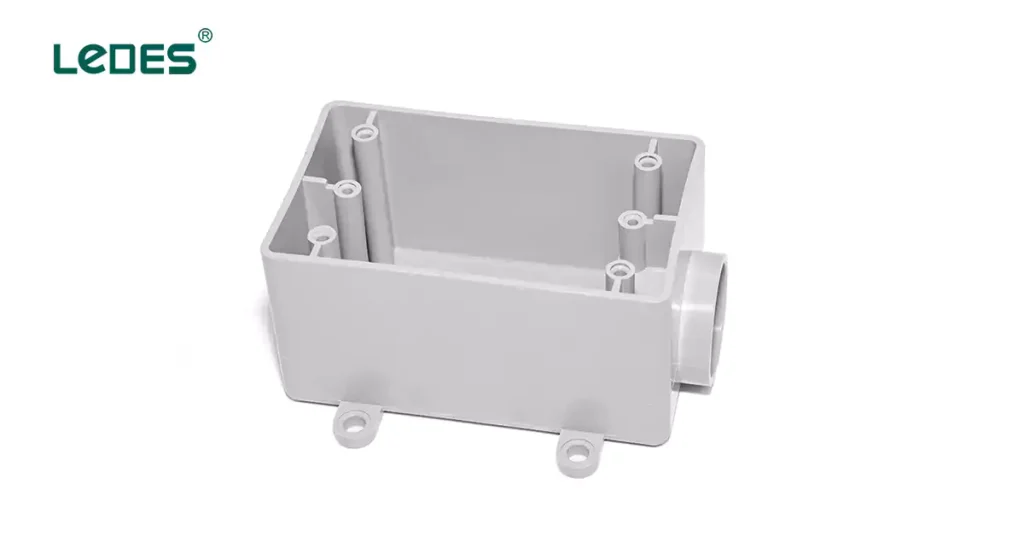
The significance of gang boxes in electrical systems cannot be overstated. These specialized enclosures serve as the cornerstone of structured wiring installations, enabling electricians and installers to create cohesive and reliable electrical networks in residential, commercial, and industrial settings. By providing a centralized and secure housing for multiple devices, gang boxes facilitate the efficient installation, connection, and management of electrical components, thereby enhancing the overall performance and safety of wiring systems.
In the subsequent sections of this comprehensive guide, we will delve deeper into the diverse aspects of gang boxes, exploring their types, materials, applications, technical specifications, installation procedures, and more. By understanding the definition, purpose, and significance of gang boxes in electrical installations, readers can gain valuable insights into the essential role that these versatile enclosures play in the realm of electrical engineering and construction.
Understanding Gang Boxes
What are the Different Types of Gang Boxes?
Here are 6 common types of gang boxes:
Single Gang Boxes: These are the most basic type, designed to accommodate one electrical device, such as a switch or an outlet.
Double Gang Boxes: With double the width of a single gang box, these boxes can hold two devices side by side.
Triple Gang Boxes: These wider boxes are capable of housing three devices in a row.
Quad Gang Boxes: Even wider than triple gang boxes, quad gang boxes can accommodate four devices in a row.
Adjustable Gang Boxes: These versatile boxes allow for customization, enabling installers to adjust the number of devices the box can hold.
Weatherproof Gang Boxes: Designed for outdoor applications, these boxes are constructed to withstand harsh environmental conditions.
Understanding the different types of gang boxes available is essential in selecting the right box for a specific electrical installation.
4 types différents de boîtes de rangement pour matériaux
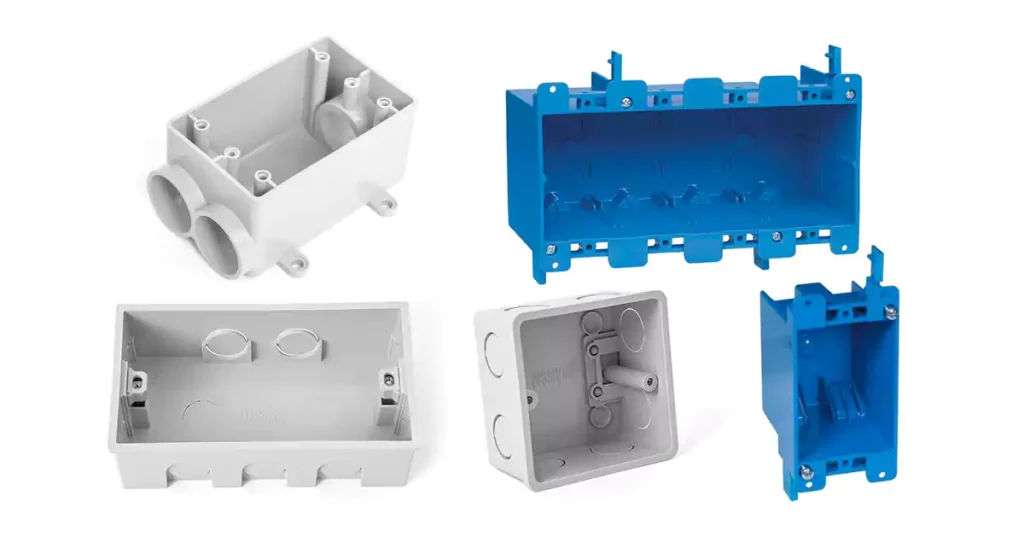
Gang boxes are typically constructed from various materials, each offering unique characteristics and advantages. Common materials used in the construction of gang boxes include:
Metal Gang Boxes: Made of steel or aluminum, metal gang boxes provide durability and strength, making them suitable for heavy-duty applications.
Plastic Gang Boxes: Lightweight and cost-effective, plastic gang boxes are often preferred for residential installations where ease of handling is essential.
Fiberglass Gang Boxes: Known for their corrosion resistance and electrical insulation properties, fiberglass gang boxes are ideal for harsh environments.
PVC Gang Boxes: PVC (polyvinyl chloride) gang boxes offer excellent resistance to moisture and chemicals, making them suitable for outdoor and wet locations.
The choice of material for a gang box depends on factors such as the installation environment, required durability, and budget considerations.
Electrical Gang Boxes Sizes, Configurations, and Features

Gang boxes are available in various sizes and configurations to accommodate different numbers and types of electrical devices. Common sizes include:
- 1 Gang: Single device capacity
- 2 Gang: Double device capacity
- 3 Gang: Triple device capacity
- 4 Gang: Quadruple device capacity
Additionally, gang boxes may come with features such as:
- Knockouts for easy cable entry and exit
- Mounting brackets for secure installation
- Internal clamps to secure wiring connections
- Grounding screws for electrical safety
Understanding the sizes, configurations, and features of gang boxes is crucial in ensuring the proper selection and installation of these enclosures in electrical systems.
What are Gang Boxes Used for?
Residential Settings
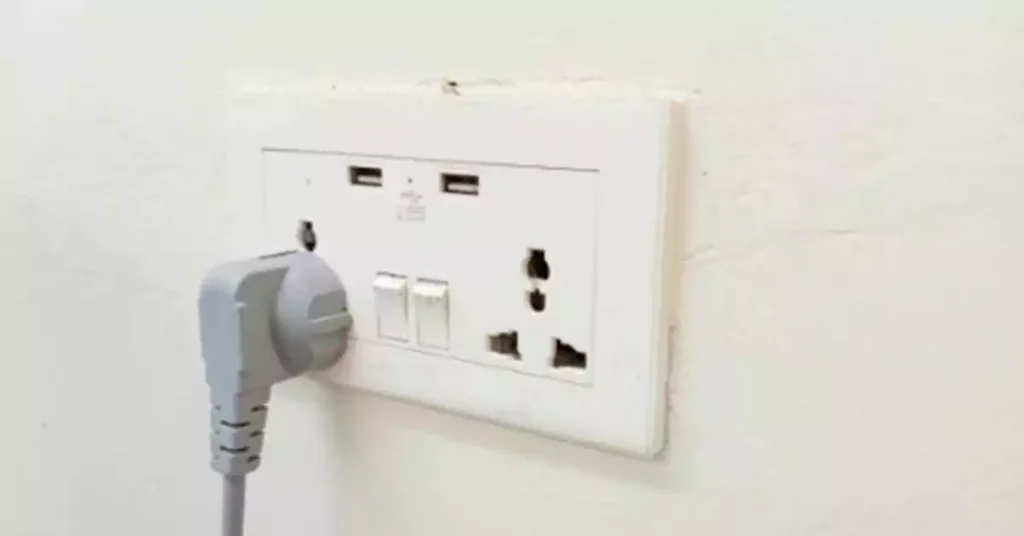
In residential settings, gang boxes play a pivotal role in organizing and securing electrical connections for various devices. Common applications include:
Lighting Controls: Gang boxes are used to house dimmer switches, light switches, and other lighting controls, providing a centralized point for controlling lighting fixtures in different rooms.
Power Outlets: Gang boxes are essential for installing power outlets throughout a home, ensuring safe and reliable electrical connections for appliances, electronics, and other devices.
Data and Communication Outlets: Gang boxes are utilized for installing data ports, phone jacks, and other communication outlets, enabling convenient access to internet and phone services in different rooms.
Ceiling Fans: Gang boxes support the installation of ceiling fans, providing a secure mounting point and electrical connection for these fixtures.
Commercial and Industrial Applications

In commercial and industrial environments, gang boxes serve a multitude of purposes, including:
Office Spaces: Gang boxes are used for installing electrical outlets, data ports, and switches in office cubicles, meeting rooms, and other work areas.
Magasins de détail : Gang boxes support the installation of power outlets, lighting controls, and security systems in retail environments, ensuring efficient electrical connections for various applications.
Installations de fabrication: Gang boxes are utilized for organizing electrical connections for machinery, equipment controls, and lighting systems in industrial settings, enhancing operational efficiency and safety.
Hospitals and Healthcare Facilities: Gang boxes play a critical role in providing reliable electrical connections for medical equipment, lighting fixtures, and communication systems in healthcare facilities, ensuring optimal functionality and patient safety.
Cable Management and Organization
Gang boxes are instrumental in cable management and organization, helping to:
Minimize Clutter: Gang boxes house electrical connections in a neat and organized manner, reducing clutter and improving the visual appeal of wiring installations.
Facilitate Maintenance: By centralizing electrical connections within gang boxes, maintenance and troubleshooting tasks become more efficient and straightforward, saving time and effort for maintenance personnel.
Prevent Cable Damage: Gang boxes protect electrical cables and connections from physical damage, moisture, and other environmental factors, ensuring the longevity and reliability of the electrical system.
Safety and Compliance Requirements
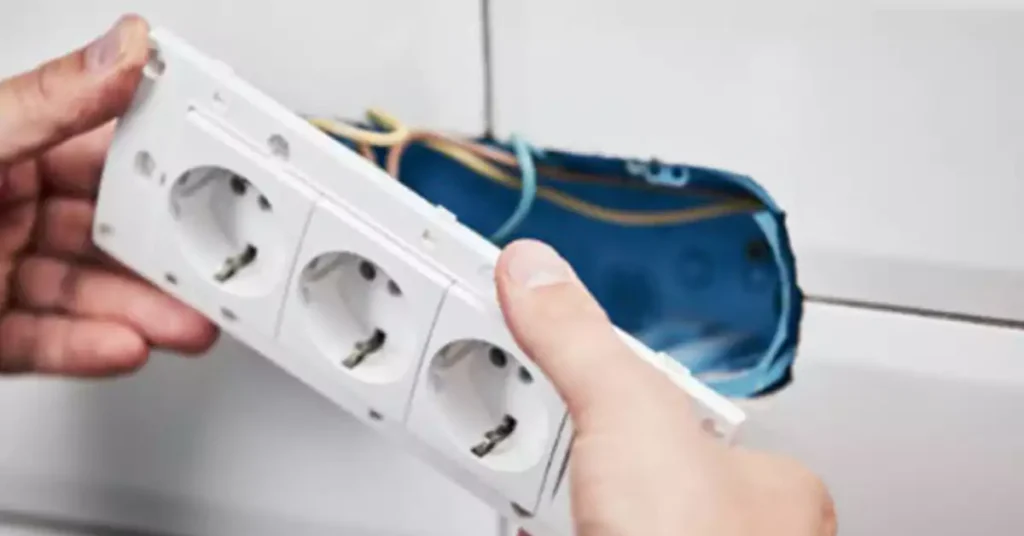
Safety and compliance with electrical regulations are paramount in the use of gang boxes, ensuring:
Sécurité électrique : Gang boxes provide a secure enclosure for electrical connections, reducing the risk of electrical hazards such as short circuits and electrical fires.
Mise à la terre : Proper grounding of gang boxes is crucial for electrical safety, preventing the buildup of electrical charges and ensuring the safe operation of electrical devices.
Conformité aux codes : Gang boxes must meet relevant electrical codes and standards, such as those set by UL (Underwriters Laboratories) and CSA (Canadian Standards Association), to ensure compliance with safety regulations and industry standards.
Adhering to safety and compliance requirements is essential in the installation and use of gang boxes, promoting electrical safety and reliability in various applications and environments.
Installation Guide and Safety Tips
nstalling gang boxes is a critical step in electrical wiring projects, and following proper guidelines and considerations is essential to ensure safe and effective installations. Here is a comprehensive installation guide along with key considerations.
Tips: you can visit this page to read the full electrical box installation guide.
10 Steps to Install the Gang Boxes:
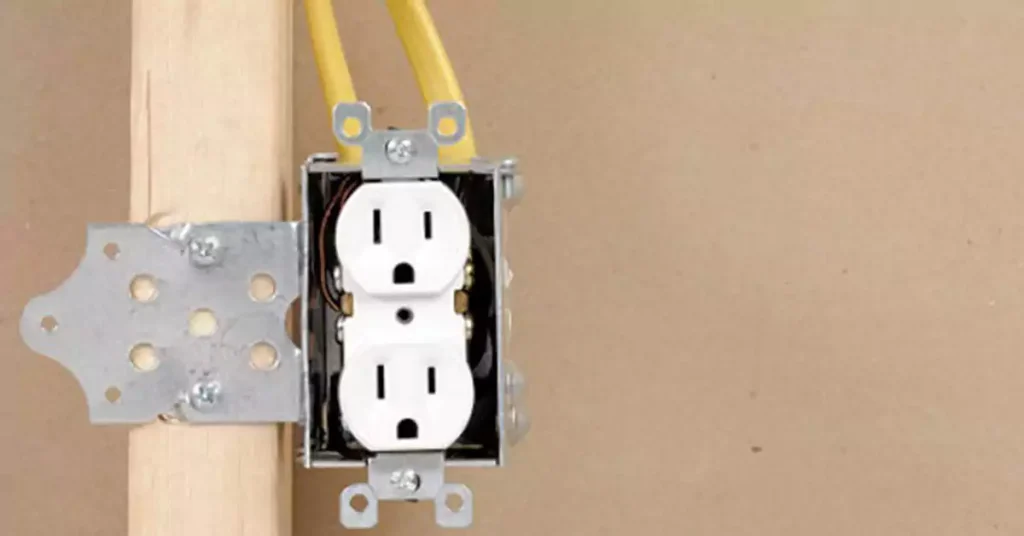
- Select the Right Box: Choose a gang box that suits the number and type of devices to be installed. Consider factors such as size, material, and features based on the specific requirements of the installation.
- Locate the Installation Site: Identify the ideal location for the gang box, ensuring it is easily accessible and meets safety and code requirements. Consider factors such as proximity to electrical devices and ease of wiring connections.
- Préparez la surface de montage : Ensure the mounting surface is flat, stable, and capable of supporting the weight of the gang box and attached devices. Make any necessary adjustments or reinforcements to the surface as needed.
- Mesurer et marquer : Use a measuring tape and level to accurately mark the location for the gang box on the mounting surface. Double-check the measurements to ensure proper alignment and spacing.
- Cut Openings: Use appropriate tools to cut openings in the mounting surface for the gang box. Ensure the openings are the correct size and shape to accommodate the box securely.
- Secure the Box: Attach the gang box to the mounting surface using screws or mounting brackets, ensuring it is firmly secured in place. Make sure the box is level and flush with the surface.
- Install Devices: Connect the electrical devices, such as switches, outlets, or receptacles, to the gang box following the manufacturer’s instructions and wiring diagrams. Use proper wiring techniques and secure connections.
- Complete Wiring Connections: Organize and secure the wiring connections within the gang box, ensuring proper insulation and strain relief. Use cable clamps or connectors to secure cables and prevent damage.
- Test the Installation: Before closing up the gang box, test the electrical connections to ensure they are functioning properly. Use a voltage tester to check for power and proper wiring.
- Secure Cover Plate: Once the installation is complete and tested, secure the cover plate over the gang box to protect the devices and wiring connections. Ensure the cover plate is aligned and properly fastened.
5 Safety Tips for Gang Boxes Installation
Safety Precautions: Prioritize safety during installation by following proper procedures, using insulated tools, and turning off power to the circuit before starting work.
Conformité au code : Ensure compliance with local electrical codes and regulations when installing gang boxes, including requirements for box size, mounting methods, and grounding.
Facteurs environnementaux: Consider environmental conditions such as moisture, temperature, and exposure to chemicals when selecting a gang box material and location for installation.
Future Accessibility: Install gang boxes in locations that allow for easy access for maintenance, repairs, and future upgrades without significant disruptions.
Professional Assistance: For complex installations or unfamiliar situations, consider seeking assistance from a qualified electrician to ensure a safe and compliant installation.
By following this installation guide and considering key factors, you can effectively install gang boxes in various electrical applications, ensuring safe and reliable electrical connections within your wiring system.
Codes Compliance and Requirements of Gang Boxes

There are many standards in different regions set the requirements for gang boxes, or outlet boxes. Here we will focus on the requirements for gang boxes in UL and CSA standards.
UL 514A: Standard for metallic outlet boxes, with requirements for materials, construction, and performance.
UL 514C: UL 514C covers requirements for nonmetallic outlet boxes and fittings that are intended for use with nonmetallic conduit, tubing, and cable systems in accordance with the National Electrical Code (NEC). With requirements for materials, constructions and performance criteria.
CSA C22.2 No. 18.1: Standard for metallic outlet boxes, covering requirements for materials, construction, and performance similar to UL 514A.
CSA C22.2 No. 18.2: Standard for non-metallic outlet boxes, set safety and performance requirements for gang boxes, some requirements are similar to UL514C.
Requirements for PVC Gang Boxes - UL 514C
UL 514C outlines requirements for nonmetallic outlet boxes, gang boxes, covers, and supports used in electrical installations. Here are some typical requirements specified by UL 514C for nonmetallic gang boxes:
Material Standards:
Nonmetallic gang boxes must be constructed from materials that meet specific durability, flame resistance, and impact resistance standards.
Flame - Retardant Properties:
The standard require the box for use with non-metallic tubing should not flame for more than 1 min after the fifth application of a standard test flame. And box for use with nonmetallic rigid conduit should not support combustion for more than 5 seconds after the third application of the flame test.
Résistance à l'écrasement
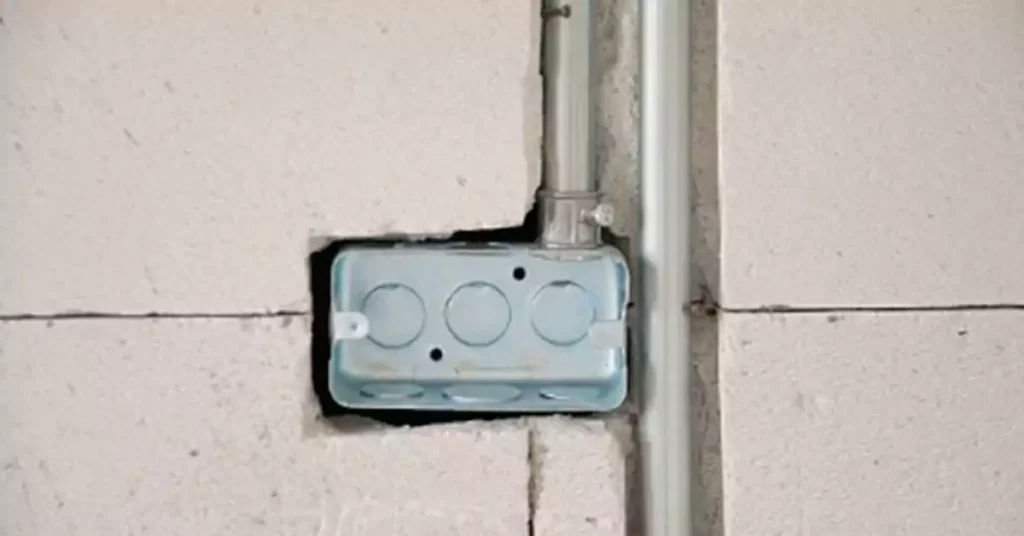
Box for use with nonmetallic tubing: Boxes are to be conditioned for 7 hours at a temperature of 90℃ in an air-circulating oven, then cool them at a room temperature for 16 hours to 96 hours, then place each box between two flat 1/2 inch thick steel plates, and apply a force of 2500 pounds (11,121 N) to the box until the box continues to yield to the force at a rate greater than that at which the force is applied.
Box for use with rigid nonmetallic conduit: The box is subjected to a force of 5000 pounds (22,241 N) as described in the standard, the reduction in height of 1/2-, 3/4-, or 1-inch conduit box is not more than 15 percent of its original height, and the reduction of any other box is not more than 10 percent of its original height.
— Test information and table data cite and reference UL514C, Fourth Edition.
Résistance aux chocs
Box for use with nonmetallic tubing: Box is to be exposed for 5h to air maintained at minus 20±1℃. And drop it onto a concrete floor twice in a rapid succession from a height of 54 feet once it be removed from the cold chamber. After test the box should show any loss of integrity and should not have a 1/32 inch (0.8 mm) dill rod through any resulting crack in the box or nailing attachment.
And test some box samples at room temperature, using a 6 pound (2.72 kg) test weight with an 3/8 inch by 3/4 inch by 6 inch polyurethane striking face drop from a height of 18 inches to trike the box adjacent to the open face. After test the box should show any loss of integrity and should not have a 1/32 inch (0.8 mm) dill rod through any resulting crack in the box or nailing attachment.
Box for use with rigid nonmetallic conduit: The box is to be placed with its open side down on a steel plate and subjected to the impact of a 75 pound 6-inch diameter cylindrical steel weight free of sharp edges and having a flat impact surface. The weight is to be dropped vertically with a distance of follow table:

— Test information and table data cite and reference UL514C, Fourth Edition.
Requirements for PVC Gang Boxes - C22.2 No.18.2
CSA C22.2 No.18.2 is a recognized standard in Canada for nonmetallic outlet boxes, including nonmetallic gang boxes. Here are some of the performance requirements for the box:
Inflammabilité :
On box sample should be conditioned in an air-circulating oven at a temperature of 90±2℃ for 168h before being tested, and other samples should be tested as received. After subjected to the flame test described in the standard, the box should not burn for more than 30 s after any of the first four applications, nor more than 1 min after the fifth application of the test flame, and any resulting openings in the material should not permit a 6.4mm diameter probe to pass through after the material has returned to approximately ambient room temperature. There should be no visible flame on the surface of the box or plaque opposite the surface to which the test flame has been applied. And there should be no glowing or burning particles during the test.
— Test information and table data cite and reference standard C22.2 No.18.2.
Crushing:
The box should be subjected to a force of 11000 N for 30 s after being conditioned for 7 h at 90±2℃, and should not crack and the amount of deflection of the boxes should not exceed 15%. The test method is clearly described in the standard.
Impact:
The box is tested at room temperature, and be placed on its side with the open face perpendicular to the bar. A 2.7kg test mass, with a 20*150mm striking face of 9.5mm thick polyurethane, dropping from a height of 460mm to strike the box adjacent to the edge of the open face. And the box should not break and not show any loss of integrity, nor permit the free passage of a 0.8mm steel rod through any resulting crack.
— Test information and table data cite and reference standard C22.2 No.18.2.
Requirements for PVC Gang Boxes | ||
Test Requirements | UL 514C | CSA C22.2 No.18.2 |
Inflammabilité | Not flame more than 1min after fifth application for box used with nonmetallic tubing | Not burn for more than 30 s after any of the first four applications, nor more than 1 min after the fifth application |
Not flame more than 5s after third application for box used with nonmetallic rigid conduit | ||
Résistance à l'écrasement | Box used with nonmetallic tubing: Condition 7h at 90℃ oven, subject to 11121 N force. | Condition 7 h at 90±2℃, subject to a force of 11000 N for 30 s |
Box used with nonmetallic rigid conduit: Subject to 22241 N force. | ||
Résistance aux chocs | Box for use with nonmetallic tubing: Some samples are conditioned 5h at minus 20±1℃, drop it onto a concrete floor twice from a height of 54 feet; Some using 6 pound (2.72 kg) test weight to strike the sample at room temperature. | Using a 2.7kg test mass, dropping from a height of 460mm to the box. |
Box for use with rigid nonmetallic conduit: Subject to the impact of a 75 pound 6-inch diameter cylindrical steel | ||
Fill Capacity of Gang Boxes
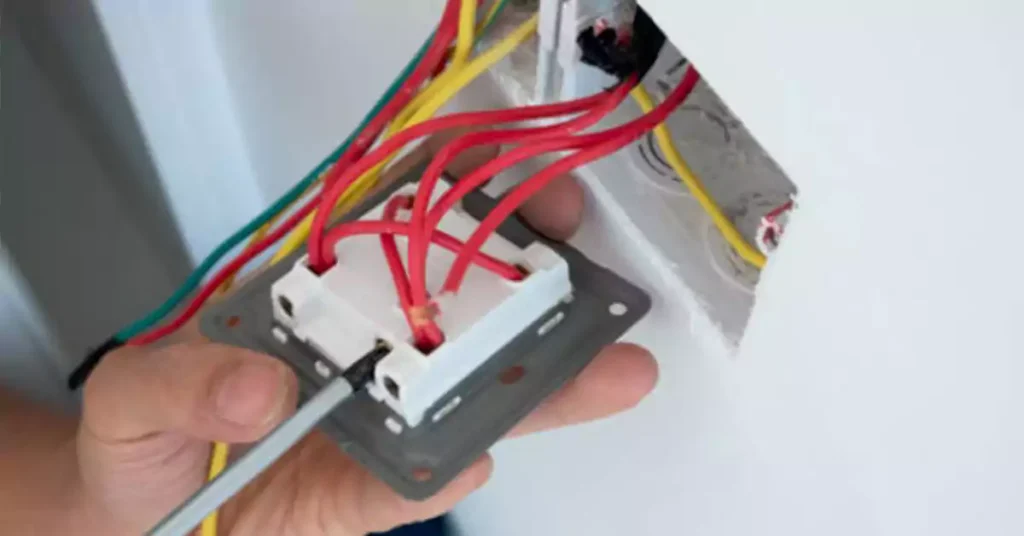
Understanding box fill capacity is crucial to ensure safety and compliance with electrical standards. Box fill determines the maximum number of wires and devices that can be safely accommodated inside an electrical box.
Single Gang Box:
A single gang box typically have 18 cubic inches of space and you can fit:
- 9 wires of #14 gauge
- 8 wires of #12 gauge
- 7 wires of #10 gauge
- Electrical Device for one switch or outlet.
Double Gang Box:
For double-gang boxes, which have two separate regions, with 34.3 cubic inches of space, and you fill:
- 16 wires of #14 gauge
- 15 wires of #12 gauge
- 13 wires of #10 gauge
- House two devices
Triple Gang Box:
Triple gang box typically with 52.9 cubic inches of space, and you can fill:
- 24 wires of #14 gauge
- 22 wires of #12 gauge
- 20 wires of #10 gauge
- House three devices
Four Gang Box:
Four gang box that with 71.5 cubic inches of space, you can fill:
- 32 wires of #14 gauge
- 30 wires of #12 gauge
- 28 wires of #10 gauge
- House four devices
Gang Box Fill Capacity Chart
Box Type | Box Volume(cu in) | #14 Gauge | #12 Gauge | #10 Gauge | Devices |
Single Gang | 18 | 9 | 8 | 7 | 1 |
Double Gang | 34.3 | 16 | 15 | 13 | 2 |
Triple Gang | 52.9 | 24 | 22 | 20 | 3 |
Four Gang | 71.5 | 32 | 30 | 28 | 4 |
These are just some common box types for reference, not all gang boxes are with the same dimensions and spaces, the specific number of conductors is depending on the box’s space you are using. Different regions could have different requirements and regulations for box fill, follow your local when installing the gang boxes.
Buying Guide for Gang Boxes
5 Things You Need to Know Before Purchased Gang Boxes
When selecting gang boxes for your electrical installations, consider the following factors:
- Taille et capacité : Choose a gang box size that can accommodate the number and type of devices you plan to install. Ensure it has sufficient capacity for wiring connections.
- Matériel: Select a material (metal, plastic, fiberglass, PVC) based on environmental conditions, durability requirements, and compatibility with wiring methods.
- Mounting Method: Consider the mounting method (nail-on, screw-on, adjustable) that best suits the installation surface and provides secure attachment.
- Caractéristiques: Look for features such as knockouts, cable clamps, and built-in grounding screws to facilitate wiring connections and installation convenience.
- Certifications : Check for UL or CSA certifications to ensure the gang box meets safety and quality standards established by reputable testing organizations.
4 Different Applications of Gang Boxes
- Residential Use: For residential applications, consider plastic gang boxes for lightweight installations or metal gang boxes for added durability and protection.
- Commercial Settings: In commercial environments, opt for metal gang boxes with ample capacity and features like knockouts for versatile wiring configurations.
- Applications industrielles : Choose heavy-duty metal gang boxes with corrosion-resistant coatings for industrial settings that require robust and long-lasting solutions.
- Installations extérieures : Select weatherproof gang boxes made of durable materials like aluminum or PVC for outdoor installations to protect against moisture and environmental elements.
Pricing and Budget Considerations
Gang box prices can vary based on factors like material, size, features, and brand. Consider the following budget considerations:
- Quality vs. Cost: Balance quality and cost by choosing gang boxes that meet safety standards and durability requirements while staying within your budget.
- Bulk Purchases: Buying gang boxes in bulk quantities may offer cost savings per unit, especially for larger projects or ongoing installations.
- Value-added Features: Evaluate the value of additional features like built-in clamps or adjustable mounting options relative to their impact on cost.
Where to Buy Gang Boxes
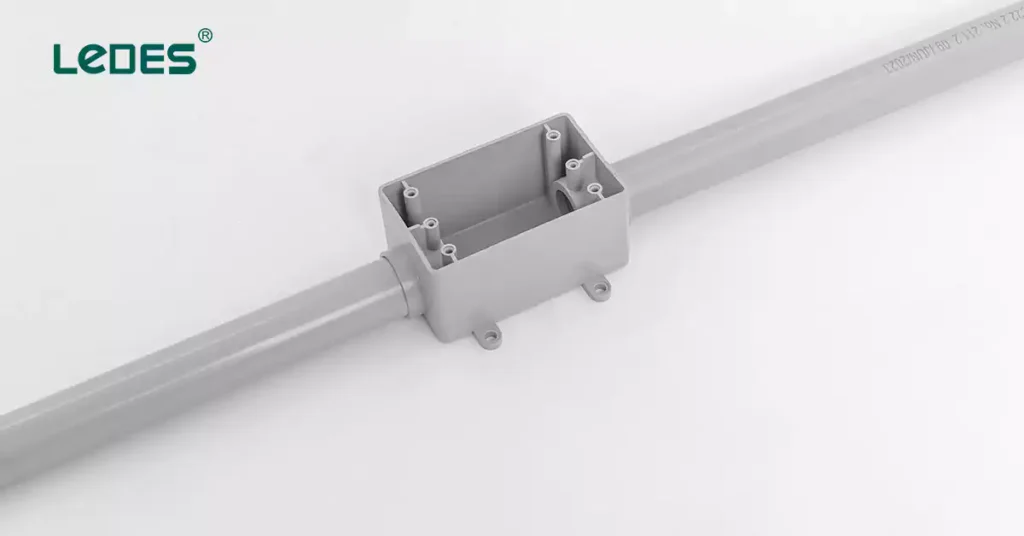
You can purchase gang boxes from various sources, including:
- Local Stores: Local stores often carry a selection of gang boxes in different sizes and materials for residential and commercial use.
- Electrical Supply Retailers: Specialty electrical supply stores offer a wider range of gang boxes, including options for specific applications and industrial settings.
- Online Retailers: Explore online platforms that sell gang boxes to compare prices, read reviews, and access a broader selection of brands and models.
- Wholesale Manufacturer: Wholesale manufacturer may offer competitive pricing on gang boxes for bulk purchases or larger projects. Better choose manufacturers with reputation and product certifications. Ledes is manufacturer of electrical conduit products and fittings, including various of electrical boxes, with UL and CSA certificates, and well recognized in some large projects, it is good choice for electrical conduit relative products purchasing.
Before buying gang boxes, ensure you have considered the necessary factors, recommendations for specific applications, pricing considerations, and where to purchase them to make an informed decision that meets your electrical installation needs.
Conclusion
In conclusion, gang box is an essential part in electrical installations, selecting the right gang boxes for your electrical installations is crucial for ensuring safety, reliability, and longevity in your wiring system. Throughout this guide, we have covered essential aspects related to gang boxes, including technical specifications, applications, standards, and purchasing considerations.
By carefully selecting gang boxes that align with your installation requirements and standards, you can enhance the lifetime and reliability of your electrical system.
Any questions and requirements, please contact us at any time with soumettre un formulaire ou en nous envoyant un email.



